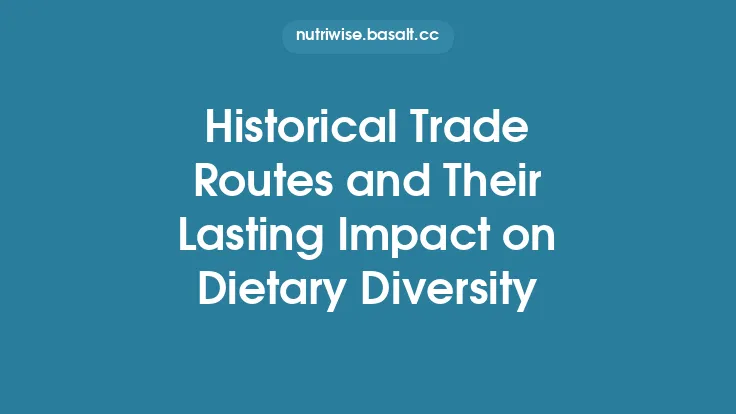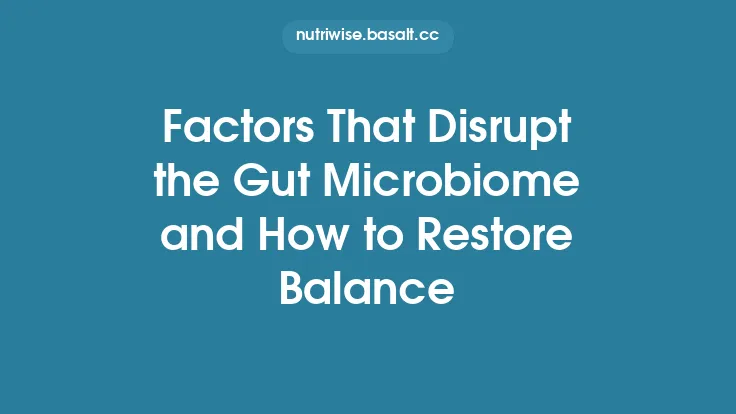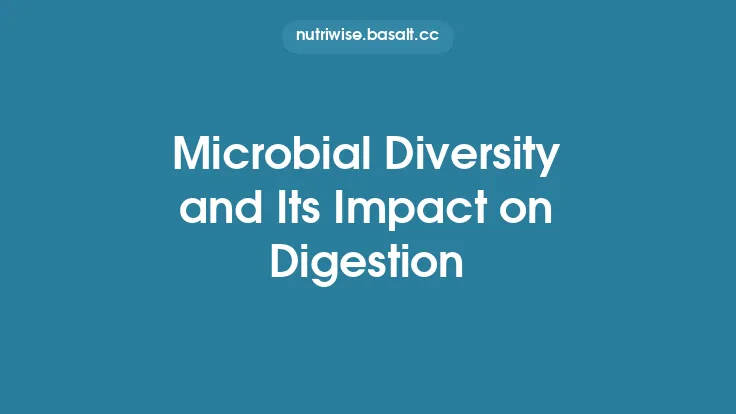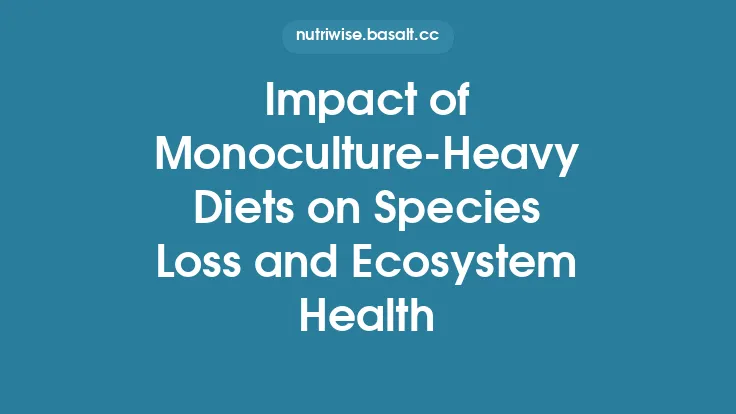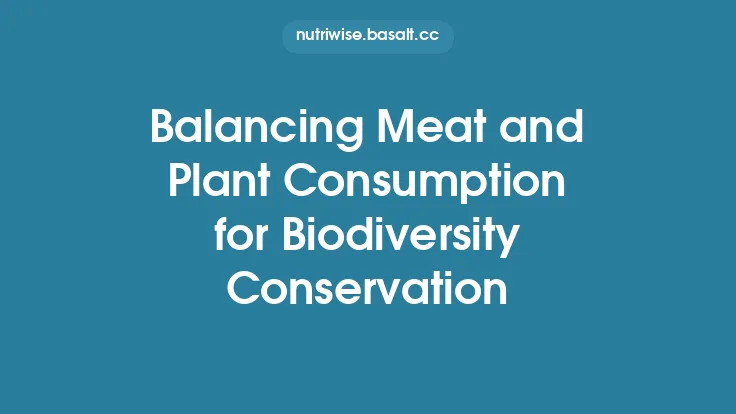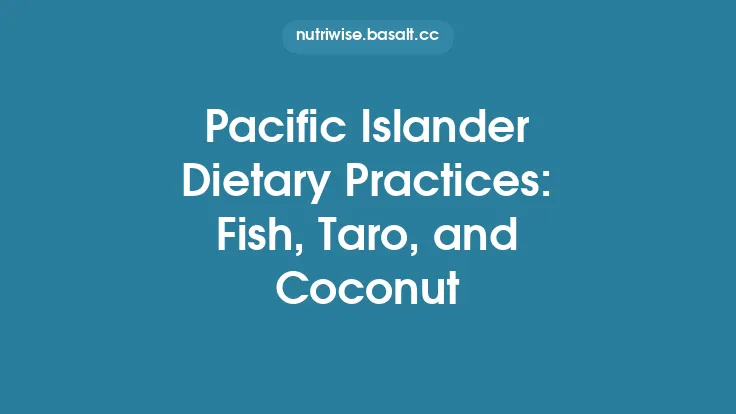The way we choose what to eat reverberates far beyond our plates. Every kilogram of food carries with it a cascade of land‑use decisions, water withdrawals, nutrient flows, and habitat alterations that together shape the tapestry of life across ecosystems. By steering our diets toward patterns that lessen pressure on vulnerable habitats and bolster the capacity of species to bounce back from disturbances, we can turn everyday meals into a powerful lever for ecological resilience.
Understanding the Link Between Diet and Habitat Structure
Food production is the dominant driver of global land‑cover change. Approximately 75 % of the Earth’s terrestrial surface is devoted, directly or indirectly, to agriculture, and the spatial arrangement of these lands determines the availability of core habitats, edge environments, and ecological corridors.
- Core habitats – large, contiguous patches of natural vegetation that support interior‑species assemblages.
- Edge habitats – transitional zones where natural and cultivated lands meet, often hosting a mix of species from both realms.
- Corridors – linear features (hedgerows, riparian strips, agroforestry rows) that enable movement and gene flow between otherwise isolated patches.
When dietary demand concentrates on a narrow set of high‑yield commodities—such as soy for animal feed, palm oil for processed foods, or intensive grain monocultures—the resulting expansion tends to homogenize the landscape, eroding edges and severing corridors. Conversely, diversified demand can sustain a mosaic of land‑use types, preserving the structural heterogeneity that underpins habitat diversity.
From Consumer Choices to Landscape Mosaic: How Demand Shapes Land Use
- Commodity Concentration vs. Distributed Production
- Concentrated demand for a few staple crops drives large‑scale, uniform fields that replace native vegetation. This reduces habitat complexity and limits the niches available for wildlife.
- Distributed demand for a broader portfolio of foods (e.g., regionally appropriate grains, legumes, nuts, and fruits) encourages a patchwork of smaller farms, each cultivating different species. The resulting patchwork maintains a higher proportion of semi‑natural habitats.
- Intensity of Input Use
- High‑input systems (synthetic fertilizers, pesticides, irrigation) often require clear‑cut, flat terrain to maximize efficiency, further stripping away structural diversity.
- Low‑input, resource‑efficient practices (e.g., organic, conservation agriculture) can be integrated into existing heterogeneous landscapes, preserving microhabitats such as soil biota refugia and understory vegetation.
- Temporal Diversity
- Seasonal rotations and staggered planting schedules create a temporal mosaic of flowering, fruiting, and leaf‑off periods, providing continuous resources for pollinators, seed dispersers, and predators. This temporal layering supports species that rely on phenological cues, enhancing overall ecosystem resilience.
Reducing Resource Intensity: Lowering Pressure on Critical Habitats
A pivotal dietary shift is the reduction of foods whose production demands disproportionate land and water resources. The following strategies illustrate how such reductions translate into habitat benefits:
| High‑Impact Food | Primary Habitat Pressure | Dietary Shift | Expected Habitat Outcome |
|---|---|---|---|
| Beef (grass‑fed) | Large pasture expanses, deforestation for feed | Replace a portion with plant‑forward proteins (e.g., pulses, nuts) | Rewilding of marginal pastures, restoration of native grasslands |
| Palm oil (refined) | Tropical forest conversion | Opt for alternatives in processed foods (e.g., sunflower, avocado oil) | Preservation of lowland rainforest, protection of endemic fauna |
| Soy for animal feed | Expansion of soy croplands in South America | Reduce overall meat consumption; prioritize soy for direct human use | Decrease in forest clearing, maintenance of riparian buffers |
By curbing demand for these high‑impact items, the pressure to convert intact ecosystems into agricultural land diminishes, allowing natural habitats to persist or recover.
Promoting Regenerative Practices Through Dietary Preferences
Regenerative agriculture—principles such as cover cropping, reduced tillage, diversified rotations, and integrated livestock—rebuilds soil organic matter, improves water infiltration, and creates structural heterogeneity. Consumer demand for foods produced under regenerative standards can accelerate adoption:
- Cover crops (e.g., clover, vetch) provide ground cover year‑round, offering habitat for arthropods and ground‑nesting birds.
- Silvopasture integrates trees with grazing livestock, generating vertical habitat layers that support birds, insects, and mammals while sequestering carbon.
- Agroforestry (e.g., cacao under shade trees) maintains canopy cover, preserving microclimates essential for understory species.
When markets reward these practices—through price premiums, certification schemes, or public procurement—farmers are incentivized to transition away from monoculture‑centric models, thereby enhancing landscape diversity.
Seafood Selections that Foster Marine Habitat Complexity
Marine ecosystems are equally sensitive to dietary choices. Overfishing and destructive gear can decimate reef structures, seagrass beds, and benthic communities. Targeted shifts in seafood consumption can mitigate these impacts:
- Prioritize Species with Low Habitat Footprint
- Small pelagic fish (e.g., sardines, anchovies) are harvested using mid‑water purse seines that have minimal contact with the seafloor, preserving benthic habitats.
- Support Sustainable Aquaculture that Mimics Natural Systems
- Integrated multi‑trophic aquaculture (IMTA) co‑cultivates fish, shellfish, and seaweeds. The seaweeds absorb nutrients, reducing eutrophication, while shellfish filter water, enhancing clarity and supporting reef organisms.
- Avoid Species Harvested with Bottom‑Contact Gear
- Trawling for demersal species (e.g., certain flatfish) physically disturbs seabed habitats, destroying coral and sponge structures that serve as refugia for countless marine organisms.
By selecting seafood that aligns with habitat‑friendly harvesting methods, consumers help maintain the structural complexity essential for marine biodiversity and the resilience of fish populations.
Minimizing Food Waste to Preserve Ecosystem Resilience
Food waste represents a hidden driver of habitat loss. When edible portions are discarded, the resources invested in their production—land, water, fertilizers—are effectively wasted, prompting additional expansion to meet demand. Strategies to curb waste amplify the benefits of dietary shifts:
- Improved Storage and Cold Chain Infrastructure reduces post‑harvest losses, especially for perishable fruits, vegetables, and fish.
- Portion Planning and Consumer Education lower household-level waste, decreasing the need for over‑production.
- Circular Food Systems (e.g., using food‑processing by‑products as animal feed or compost) recycle nutrients back into the soil, reducing the pressure to clear new land for feed crops.
Collectively, waste reduction translates into fewer incentives for habitat conversion, preserving existing ecological networks.
Policy and Market Levers that Align Diet with Habitat Diversity
Individual choices are amplified when supported by systemic mechanisms:
- Ecological Labeling – Certifications that explicitly assess habitat impact (e.g., “Habitat‑Friendly Certified”) guide consumers toward products that maintain landscape heterogeneity.
- Subsidy Reallocation – Redirecting agricultural subsidies from intensive monocultures to diversified, low‑input farms encourages habitat‑positive production.
- Zoning and Land‑Use Planning – Policies that protect high‑biodiversity corridors and limit agricultural expansion into critical habitats create a regulatory backbone for sustainable diets.
- Public Procurement – Government institutions can prioritize purchases of foods produced under regenerative or habitat‑friendly standards, generating stable market demand.
When these levers operate in concert, they create a feedback loop where dietary preferences shape production practices, which in turn reinforce habitat diversity and species resilience.
Practical Steps for Individuals and Communities
- Audit Your Plate – Identify high‑impact items (e.g., beef, palm‑oil‑laden products) and set realistic reduction targets.
- Choose Seasonally Local Produce – Seasonal sourcing reduces the need for energy‑intensive storage and long‑distance transport, often aligning with diversified regional farming systems.
- Support Regenerative Brands – Look for certifications such as Regenerative Organic Certified (ROC) or participate in community‑supported agriculture (CSA) that emphasizes soil health and biodiversity.
- Select Low‑Impact Seafood – Use resources like the Monterey Bay Aquarium’s Seafood Watch to pick species harvested with minimal habitat disturbance.
- Reduce Waste – Plan meals, store foods properly, and compost organic scraps to keep nutrients within the system.
- Advocate Locally – Engage with municipal planners to protect green corridors and promote urban agriculture that adds habitat patches within cities.
By integrating these actions into daily life, each person contributes to a larger mosaic of habitat preservation, fostering ecosystems that can withstand climate shocks, invasive species, and other stressors.
In summary, dietary shifts are not merely a matter of personal health; they are a conduit for reshaping the very fabric of the planet’s habitats. When consumption patterns favor diversified, low‑intensity, and regenerative food systems, the resulting landscape mosaic sustains a richer array of species and equips them with the resilience needed to thrive amid a changing world. The plate, therefore, becomes a frontline tool in the stewardship of biodiversity—one bite at a time.
